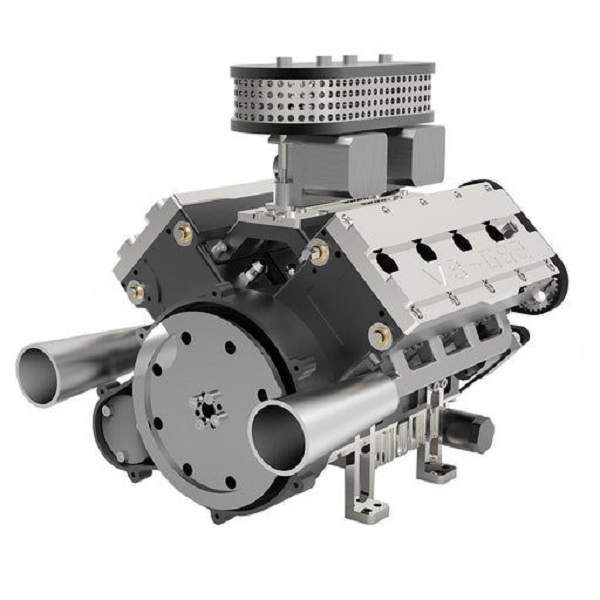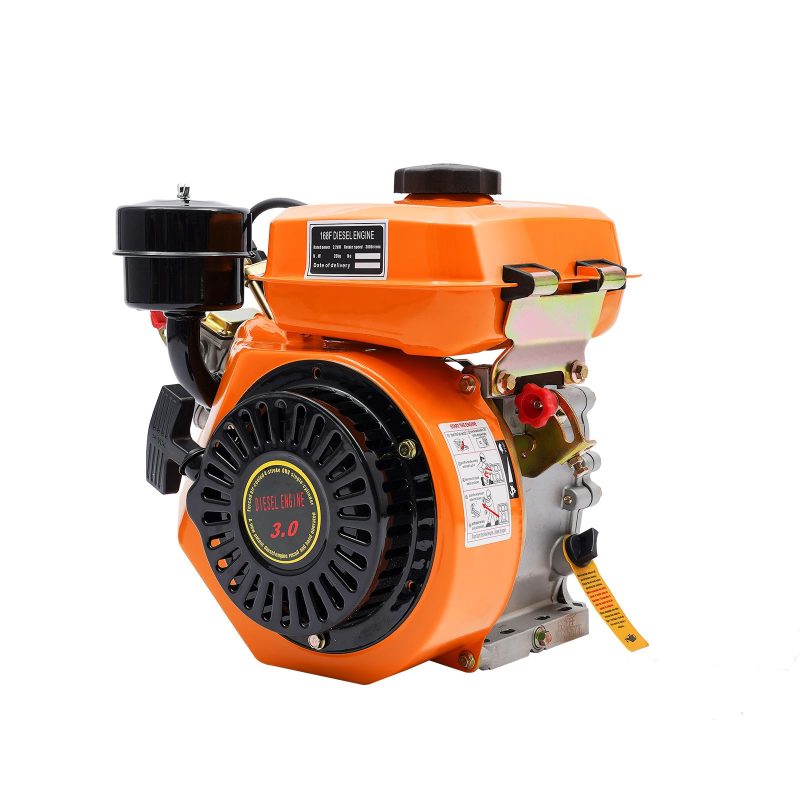An engine derate is a frustrating and potentially costly issue that can strike any vehicle. It occurs when the engine’s power output is reduced due to a variety of factors, from sensor malfunctions to clogged emissions systems. This article will delve into the intricacies of engine derates, exploring common causes, symptoms, and most importantly, effective solutions. Whether you’re a seasoned mechanic or a DIY enthusiast, understanding how to clear an engine derate is crucial for maintaining optimal vehicle performance.
Understanding Engine Derate
What is Engine Derate?
Engine derate is a protective mechanism built into modern vehicles to safeguard the engine from potential damage. When the engine’s computer detects a problem or abnormal operating condition, it reduces power output to prevent further issues. While this is a safety feature, it can significantly impact your vehicle’s drivability.
Common Causes of Engine Derate
Numerous factors can trigger an engine derate. Some of the most prevalent causes include:

- Sensor Failures: Malfunctioning sensors, such as the mass airflow sensor, oxygen sensor, or coolant temperature sensor, can send incorrect information to the engine’s computer, leading to derate.
- Emissions System Issues: Clogged diesel particulate filters (DPFs), faulty catalytic converters, or problems with the EGR (exhaust gas recirculation) system can cause derate.
- Fuel System Problems: Issues with fuel injectors, fuel pumps, or low-quality fuel can contribute to engine derate.
- Turbocharger Malfunctions: A damaged or underperforming turbocharger can restrict airflow and trigger a derate.
- Engine Mechanical Issues: Problems with the engine itself, such as low compression or worn-out components, may also cause derate.
Symptoms of Engine Derate
Recognizing the signs of an engine derate is essential for timely diagnosis and resolution. Common symptoms include:
- Reduced engine power
- Decreased fuel economy
- Check engine light illuminated
- Rough idle
- Smoke from the exhaust
- Hesitation or stumbling during acceleration
DIY Troubleshooting Steps
Before seeking professional help, there are several steps you can take to diagnose and potentially resolve the issue yourself.
- Check for Diagnostic Trouble Codes (DTCs)
Using an OBD-II scanner, you can retrieve any stored trouble codes. These codes can provide valuable clues about the underlying problem.
- Inspect Engine Components
Visually inspect engine components for signs of damage or wear. Check hoses, belts, and connections for any visible issues.
- Clean Sensors
Sensor performance can be compromised by dirt and debris. Carefully clean sensors with a sensor cleaner to improve their accuracy.
- Check Fuel Quality
Using low-quality fuel can contribute to engine derate. Consider using a fuel system cleaner to remove deposits and improve fuel quality.
- Clear Engine Codes
In some cases, simply clearing engine codes may temporarily resolve the derate. However, this is often a temporary fix, and the underlying issue must be addressed.
Professional Diagnosis and Repair
If DIY troubleshooting fails to identify and resolve the problem, it’s time to consult a qualified mechanic. A professional can perform a comprehensive diagnosis using specialized equipment and expertise.
Possible repairs may include:

- Replacing faulty sensors
- Cleaning or replacing emissions system components
- Repairing or replacing fuel system components
- Reconditioning or replacing the turbocharger
- Overhauling or replacing the engine (in severe cases)
Choosing the Right Mechanic
Selecting the right mechanic is akin to choosing a healthcare provider for your vehicle. A qualified and experienced technician can accurately diagnose and repair engine derate issues efficiently, saving you time, money, and frustration.
Key factors to consider when choosing a mechanic include:
- Experience and certifications: Look for a mechanic with experience working on your specific vehicle make and model. ASE (Automotive Service Excellence) certifications indicate a high level of expertise.
- Reputation and customer reviews: Online reviews and recommendations from friends or family can provide valuable insights into a mechanic’s reputation for quality work and customer satisfaction.
- Transparency and communication: A good mechanic will explain the problem clearly, provide options for repair, and offer upfront pricing.
- Warranties and guarantees: Reputable mechanics stand behind their work with warranties or guarantees, offering peace of mind.
- Shop facilities and equipment: Modern diagnostic equipment and a clean, well-organized shop are indicators of a professional operation.
Additional tips for finding a reliable mechanic:
- Ask for referrals: Seek recommendations from friends, family, or other trusted sources.
- Get multiple quotes: Compare prices and services from different mechanics before making a decision.
- Trust your instincts: If you feel uncomfortable or uneasy about a mechanic, it’s best to look elsewhere.
By investing time in finding a qualified mechanic, you can ensure your vehicle receives the care it deserves and avoid costly mistakes.
Understanding the Severity of Your Engine Derate
Mild Engine Derate: DIY Solutions
A mild engine derate might be manageable with some DIY troubleshooting. However, it’s essential to approach the issue systematically to avoid aggravating the problem.
Identifying the Severity
Determining the severity of your engine derate is crucial. A mild derate might only affect performance under heavy load, while a severe derate can significantly impact drivability. Pay attention to the following indicators:
- Frequency of the derate: Does it occur sporadically or consistently?
- Conditions leading to derate: Does it happen under specific circumstances, such as uphill climbs or cold starts?
- Engine performance: Is there a noticeable loss of power, or is it a subtle reduction?
Common Causes and Solutions
If you suspect a mild engine derate, consider these potential causes and DIY solutions:
- Dirty Air Filter: A clogged air filter restricts airflow, reducing engine power. Replace the filter with a new one.
- Spark Plugs (Gasoline Engines): Worn-out spark plugs can cause misfires and reduced performance. Inspect and replace if necessary.
- Fuel System Issues: Contaminants in the fuel system can affect engine performance. Use a fuel system cleaner and consider replacing the fuel filter.
- Sensor Malfunction: A faulty sensor can provide inaccurate data to the engine computer, leading to derate. Use an OBD-II scanner to check for sensor-related codes.
- Turbocharger Issues (Diesel Engines): Turbocharger problems can contribute to engine derate. Inspect for leaks, damage, or reduced boost.
Severe Engine Derate: Professional Help
If you’re experiencing a severe engine derate, it’s advisable to seek professional help. A qualified mechanic can accurately diagnose the underlying issue and perform necessary repairs.

Common Causes and Solutions
Severe engine derate often indicates more serious problems:
- Engine Mechanical Issues: Issues like low compression, worn piston rings, or damaged valves can cause severe derate. These problems require professional diagnosis and repair.
- Turbocharger Failure: A completely failed turbocharger can significantly impact engine performance. Replacement is usually necessary.
- Emission System Problems: Clogged DPF (diesel particulate filter) or malfunctioning EGR system can lead to severe derate. Professional cleaning or replacement might be required.
Preventive Maintenance
Regular vehicle maintenance is the cornerstone of preventing engine derate and prolonging your vehicle’s lifespan. By adhering to the manufacturer’s recommended service schedule, you’re not only safeguarding against derate but also ensuring optimal performance and fuel efficiency.
Key maintenance tasks include:
- Oil and filter changes: Regular oil changes remove contaminants and debris that can harm engine components.
- Coolant system checks: Ensure proper coolant levels and condition to prevent overheating and engine damage.
- Air filter replacement: A clean air filter allows optimal airflow to the engine, improving performance and fuel economy.
- Fuel system maintenance: Regular fuel system cleaning and filter replacement prevent fuel-related issues.
- Spark plug replacement (gasoline engines): Worn-out spark plugs can cause misfires and reduced engine power.
- Glow plug inspection (diesel engines): Ensure proper functioning of glow plugs for reliable cold starts.
- Tire rotation and balancing: Proper tire maintenance contributes to overall vehicle health and performance.
Beyond scheduled maintenance, consider these additional tips:
- Use high-quality fluids and filters: Investing in premium fluids and filters can extend engine life and protect against wear.
- Avoid aggressive driving: Excessive acceleration, hard braking, and high speeds can put undue stress on the engine.
- Warm up your engine: Allow the engine to warm up gradually before driving, especially in cold weather.
- Listen for unusual noises: Pay attention to any unusual sounds coming from the engine, as they may indicate underlying issues.
By prioritizing preventive maintenance, you can significantly reduce the risk of engine derate and enjoy a smoother, more reliable driving experience.
Conclusion
Engine derate can be a frustrating experience, but understanding the potential causes and taking appropriate steps can help minimize downtime and repair costs. By following the guidelines outlined in this article, you can increase your chances of successfully diagnosing and resolving engine derate issues.



